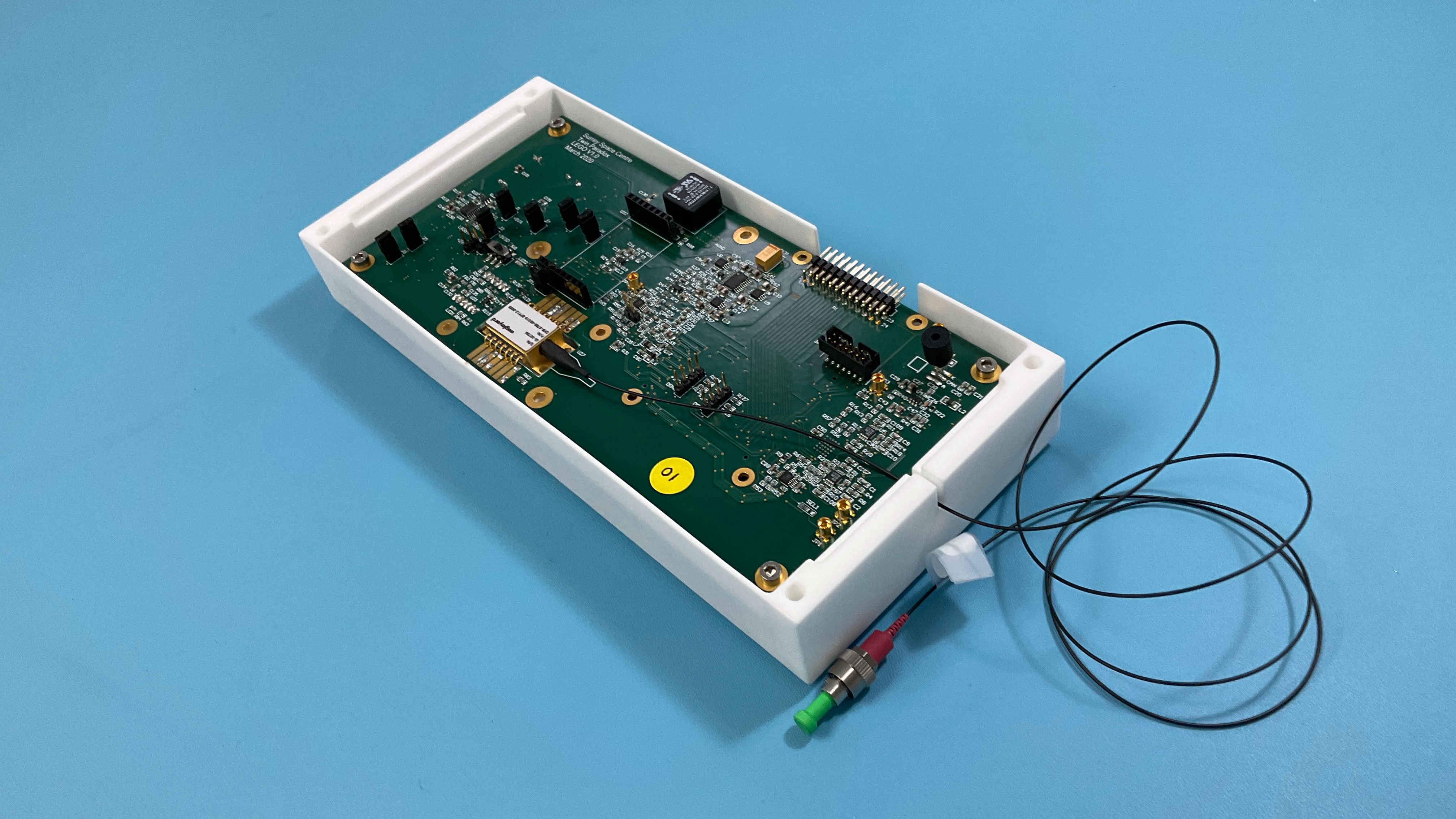There exists strong un-met need for precise, accurate, and yet frequency agile lasers across the entire UV-NIR spectrum. Applications range from optical atomic clocks [1,2,3] and quantum gravimeters [4], to laser ranging [4,5] and coherent laser links [6]. These all require multiple stabilised lasers with Hz-to-kHz resolution over GHz bandwidths.Existing laser systems are typically "space-hardened" versions of their respective laboratory scientific experiment, with each laser system and associated electronics custom designed and assembled at great expense. The traditional approach is to use multiple tuneable laser sources (for GHz bandwidth), each with numerous narrow bandwidth modulators (for stabilisation and resolution). Frequency (de)modulation and control loops are achieved using fixed frequency analog circuits. For one-off, or early-stage missions with only one or two required laser systems this approach is acceptable; but as more, and more complex, applications reach maturity a new solution is essential. This solution lies in applying the techniques and components from software defined radios (SDR). An all-digital control system implemented an FPGA, combined with SDR transceivers and electro-optic modulators has the potential to create a software defined laser - a single core laser device that can be re-programmed with application specific code to generate an arbitrary optical spectrum. This PhD project will build on the LEGO FPGA demonstrator by Surrey Space Centre and Twin Paradox Labs - compatible with any diode laser or micro-bench [7,8,9] across the UV-NIR - to develop such a device. It will research what frequency, phase, and amplitude agility is achievable using standard commercial transceivers and modulators, and will enable previously difficult frequency control schemes such as offset-locking, single-sideband-modulation, and simultaneous multiple frequency modulation, for complex applications such as atom trapping, spectroscopy, and coherent links.

